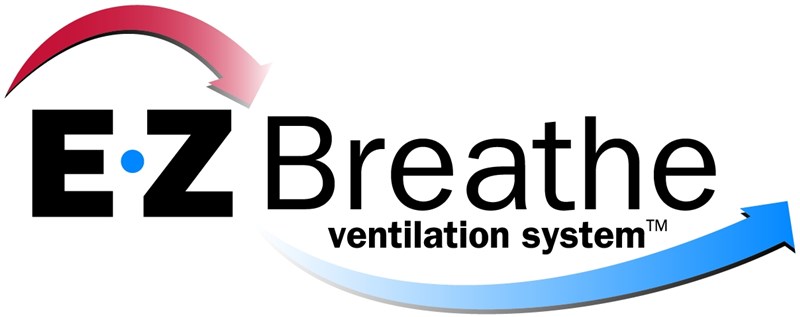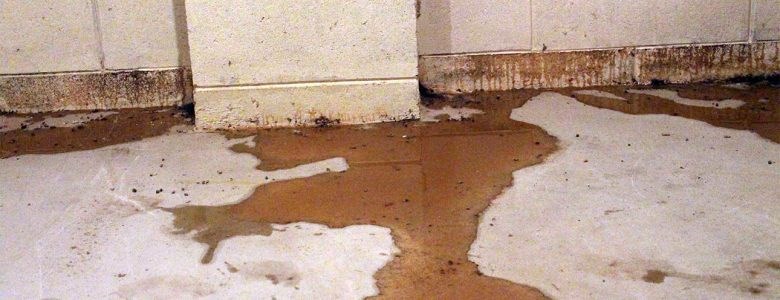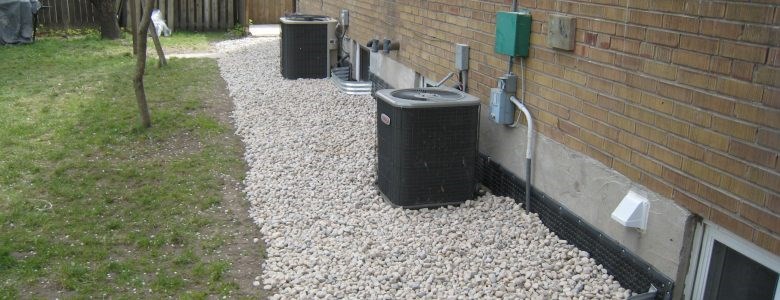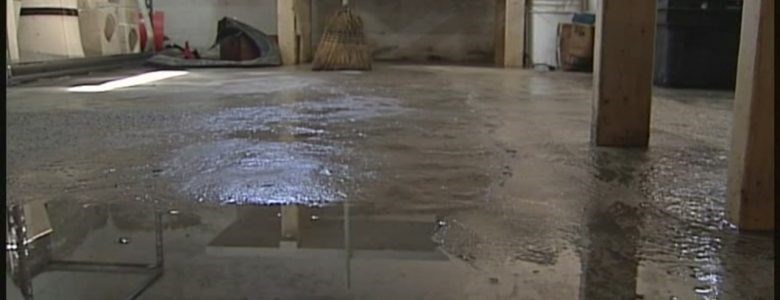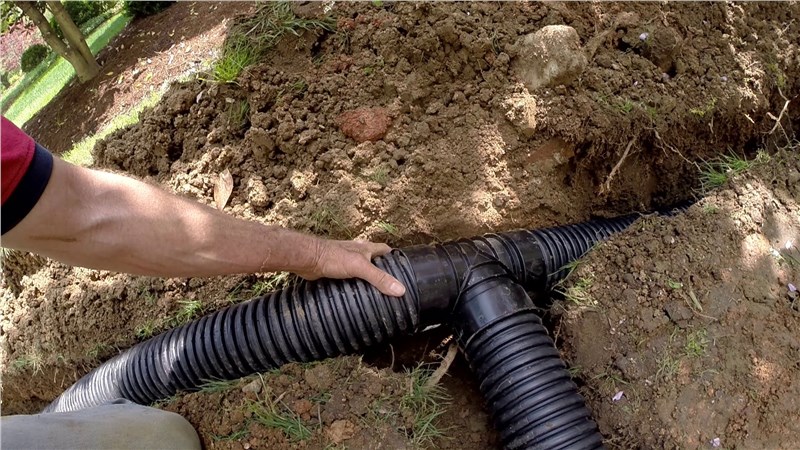Are you considering crawlspace waterproofing? Waterproofing your crawlspace is an effective way to keep moisture out of the crawlspace.
Crawlspace waterproofing is a critical part of home maintenance. If crawlspaces become wet or moisture seeps in, it can cause serious damage to the building’s foundation and structure. The presence of water in crawlspaces also creates an ideal breeding ground for mold and mildew which can lead to health hazards. Crawlspace waterproofing should be done regularly to prevent these issues from occurring.
Crawlspaces are often overlooked areas in homes. These spaces are typically dark, and damp, and can be a breeding ground for mold, mildew, and other moisture-related issues. However, crawlspaces are an essential part of any home’s structure, providing access to important systems such as plumbing, and electrical. And, while crawlspaces may not be the most glamorous part of your home, they can have a significant impact on your energy bills.
Crawlspace Waterproofing and Energy Efficiency

Crawlspaces can have a significant impact on your home’s energy efficiency. These spaces are often uninsulated, allowing air to enter and exit the home. In fact, according to the Department of Energy, up to 30% of a home’s energy loss can be attributed to uninsulated or poorly insulated crawlspaces. This can result in higher heating and cooling bills.
Additionally, crawlspaces can be a source of moisture and humidity, which can lead to mold, mildew, and other moisture-related issues. These issues can affect the air quality in your home, making it harder to breathe and increasing the risk of respiratory problems.
In extreme cases, mold and mildew can also cause structural damage to your home.
In addition to waterproofing, insulation is also an important factor in reducing energy bills. Insulation helps to prevent heat loss in the winter and heat gain in the summer. When your crawlspace is uninsulated or poorly insulated, it can allow heat to escape or enter your home, which can result in higher energy bills.
Crawlspace Waterproofing Methods
One common method of crawlspace waterproofing is using a polyethylene vapor barrier. This material lines the crawlspace floor and walls and helps keep out moisture while still allowing air to move through the crawlspace. A good quality vapor barrier should be durable enough to last at least 10 years without needing replacement.
another method of crawlspace waterproofing involves sealing the walls with a plastic sheeting or membrane before applying an exterior sealant or coating. This helps keep moisture out of the crawlspace and prevents it from entering your home.
The use of sump pumps is also a common method for waterproofing crawlspaces. These pumps will collect and remove any standing water from the area and drain it away from your home. Crawlspace drainage systems can be installed underneath the foundation or along the perimeter of the space to ensure that excess water is quickly removed from your home’s interior.
In addition to these methods, there are also various products available on the market designed specifically for crawlspace waterproofing, such as encapsulation liners, vapor barriers, and drainage tiles.
How To Select The Right Crawlspaces Waterproofing Method?
When deciding on the right crawlspace waterproofing method for your home, it is important to consider a few factors. Crawlspaces can be prone to flooding due to inadequate drainage and other forms of water intrusion. This can cause serious damage, including mold and mildew growth, wood rot, and structural damage. Taking steps to prevent this from occurring is critical in preserving both the structure of your home and its value.
The first factor you should consider when selecting a crawlspace waterproofing method is the severity of the existing moisture problem. If you have a major leak or standing water issue in your crawlspace then it may require more intensive solutions such as sump pumps or professional-grade insulation systems. If the problem is less severe, you may be able to use more basic solutions such as dehumidifiers or vapor barriers.
Finally, it is important to remember that crawlspace waterproofing can be a complicated process and should not always be attempted without professional assistance. Taking the time to call an expert in crawlspace waterproofing will help ensure that you get the most effective solution for your particular home and situation.
However, it will do much more than that. When done properly, crawlspace waterproofing will help to improve the energy efficiency of your home. This in turn will help to reduce your energy bills.
Wondering how this is possible? The following are some ways that waterproofing your crawl space will help to reduce your energy bills.
1. Encapsulating your crawlspace will prevent the loss of energy to the outside environment
Comprehensive crawlspace waterproofing systems also involve encapsulating the crawlspace. Encapsulating the crawlspace means closing it off completely from the external environment. This prevents air from the outside from entering the crawlspace. It also prevents air from the inside from leaving the crawlspace. Encapsulation adds a layer of insulation to the home and prevents the loss of energy from the inside of the home to the outside. This reduces the amount of energy used to heat or cool the home.
How To Encapsulate Your Crawlspace?
Encapsulating your crawlspace is a great way to improve the energy efficiency of your home. Encapsulation involves sealing off the walls and floors of the crawlspace from the outside air. This will help reduce moisture, lower humidity levels, and prevent pests from entering the area. It’s an important step in preventing mold growth and making sure your home is safe and healthy. Encapsulating your crawlspace can also reduce energy costs by preventing warm air from seeping out in the winter, and cool air from escaping during the summer.

In order to properly encapsulate your crawlspace there are several steps to take. First, you should make sure that any holes or openings in the foundation walls are sealed up and that any vents or pipes that go outside the home are covered. This will help keep outside air from entering the area. You should also inspect the crawlspace for any mold growth, water damage, or other signs of pest infestation.
1. Waterproofing reduces the level of humidity in your home
High humidity levels will mean that your HVAC will have to work harder to heat or cool your home. Installing a water barrier and encapsulating your crawlspace will reduce the amount of moisture that enters your crawlspace. This will in turn the level of humidity in your home. The reduced levels of moisture will mean that you will use less energy to keep your space comfortable. This will be reflected in lower energy bills.
Crawlspace waterproofing is an effective way to reduce the level of humidity in your home. Humidity is the measure of the amount of moisture in the air. Excessive humidity can lead to a host of problems such as mold growth, musty odors, and respiratory issues. Crawlspace waterproofing can help mitigate these issues by preventing moisture from entering the crawlspace and the rest of the home. In this article, we’ll discuss the various ways crawlspace waterproofing reduces humidity levels in your home.
- Prevents water seepage: The first and most obvious benefit of crawlspace waterproofing is that it prevents water from seeping into the crawlspace. This can be achieved through various methods such as sealing the crawlspace walls and floors, installing sump pumps and drainage systems, and applying waterproof coatings. By preventing water from entering the crawlspace, the moisture levels are reduced, which ultimately lowers the humidity levels in your home.
- Reduces condensation: When warm and humid air comes in contact with a cold surface, it can lead to condensation. This can happen in the crawlspace, especially during the summer months when the outside temperature is higher than the temperature inside the crawlspace. When moisture accumulates in the crawlspace, it can lead to mold growth and other issues. Crawlspace waterproofing can help reduce the amount of condensation by creating a barrier between the humid air and the cold surfaces in the crawlspace.
- Promotes proper ventilation: Another benefit of crawlspace waterproofing is that it promotes proper ventilation. By sealing the crawlspace, the air that enters your home is controlled, which prevents excessive moisture from entering. This can be achieved through various ventilation systems such as installing vents or fans. A well-ventilated crawlspace ensures that the air is constantly flowing, which helps reduce the level of humidity in your home.
- Prevents mold growth: Mold thrives in environments that are damp and humid. A moist crawlspace can create the perfect breeding ground for mold, which can quickly spread to the rest of your home. Crawlspace waterproofing helps prevent moisture from accumulating in the crawlspace, which ultimately reduces the chances of mold growth. This not only protects your home but also improves the air quality by eliminating mold spores.
- Improves indoor air quality: Lastly, crawlspace waterproofing improves the indoor air quality in your home. By reducing the level of humidity, you are effectively eliminating the conditions that allow for mold growth and other air quality issues. This ultimately leads to a healthier and safer living environment for you and your family.
In conclusion, crawlspace waterproofing is an effective way to reduce the level of humidity in your home. By preventing water seepage, reducing condensation, promoting proper ventilation, preventing mold growth, and improving indoor air quality, crawlspace waterproofing provides numerous benefits that can help protect your home and your family.
2. Waterproofing protects your ductwork
Most homes’ ductwork in heating and cooling systems runs through the crawlspace. Therefore, a lot of energy is lost through the ductwork to the air in the crawlspace. Waterproofing your crawlspace will mean that the ductwork will be within an envelope. This protects the ductwork from exposure to cold or hot air from the outside. It will reduce the amount of energy lost to the environment. This will translate into big savings in your energy bills.
Water can enter ductwork in a variety of ways. For example, leaks in the roof or walls can allow rainwater to seep in, condensation can accumulate on the ducts themselves, and floods can cause extensive damage to the system. When water enters ductwork, it can cause a number of problems. Rust can develop on metal ducts, leading to structural damage and eventual failure. Mold can also grow in damp environments, which can lead to health problems for building occupants. Additionally, the insulation surrounding the ductwork can become wet and lose its effectiveness, leading to energy loss and increased utility bills.
Waterproofing your ductwork can prevent these issues from occurring. By applying a waterproof coating to the exterior of the ducts, you can prevent water from entering and causing damage. Waterproof coatings can be applied to metal, fiberglass, and other types of ductwork. They create a barrier that prevents moisture from penetrating the surface of the ducts, keeping them dry and in good condition.
In addition to preventing water damage, waterproofing your ductwork can also improve energy efficiency. When insulation becomes wet, it loses its effectiveness, which can lead to increased energy usage and higher utility bills. By keeping the insulation dry, you can ensure that it continues to perform optimally, reducing energy waste and saving money.
Finally, waterproofing your ductwork can extend the lifespan of the system. Water damage can cause significant structural damage to ductwork, leading to costly repairs or even replacement. By protecting your ductwork from water damage, you can ensure that it lasts longer and functions properly for years to come.
You Should Always Call An Expert.
Studies show that you can cut your energy bills by as much as 15 percent when you invest in crawlspace waterproofing. However, you can only benefit from waterproofing when it is done right. It is therefore important to engage an experienced professional when waterproofing your crawlspace. You should also ensure that you invest in a waterproofing system that pays attention to improving energy efficiency in addition to keeping the crawlspace dry.
Contact Worthington Waterproofing today to schedule a consultation with one of our professionals. We will assess your needs and provide you with a customized solution that fits your budget and preferences. Let us help you keep your home safe and dry
Subscribe to Worthington Waterproofing's Blog





